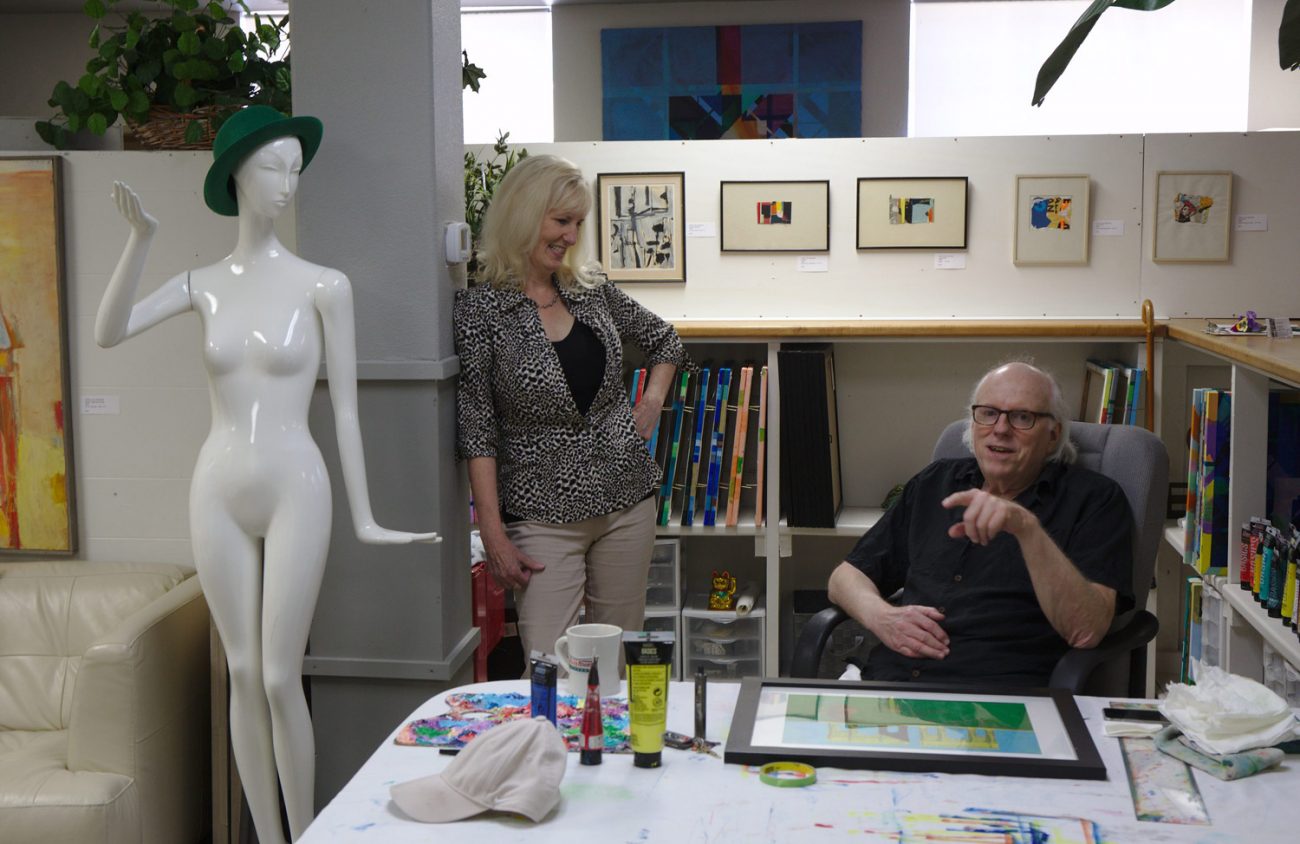Half a century ago in Los Angeles, Jim Tronson was a young architect fresh out of the University of Arizona and seeking his fortune. He landed an apprenticeship with Gruen Associates, one of the biggest architectural firms in the world. Its founder, Victor Gruen, is credited with inventing the shopping mall.
“I actually saw Victor, once,” says Tronson, a tall man with a shock of white hair who possesses a theatrical intensity that reminds me of Doc Brown in Back to the Future.
In those days his hair was black, but Tronson’s intensity was so off the charts that he reminded people of Jack Nicholson. He showed up for work at Gruen’s buttoned-down firm with long hair and worn-out shoes. Once, during a presentation for a big commercial client, he laid out an enormous paper blueprint on the floor of a conference room.
“Everyone was looking down at the drawings, and then they’re looking at my shoes,” he recalls. “They were loafers, taped together. And one guy said to César, ‘You’ve got to pay this guy more.’”
That would be César Pelli, another starchitect partner in the firm — think the National Museum of Art in Osaka, Japan; the World Financial Center in New York; the twin Petronas Towers in Kuala Lumpur, for six years the world’s tallest skyscraper.
Young Tronson was an erratic, glittery goldfish learning to swim among these corporate sharks. “I was only interested in space, in the philosophy of design,” he explains. “They were interested in door knobs and cranking stuff out. But I toed the line, and I wouldn’t change any of it.”
He soon got his license and opened his own small Southern California firm.
In those days, Jim Tronson frequented a popular Mexican restaurant in Westwood named Macho’s. There he ran into a tall blonde who had moved to L.A. — like so many others — to become an actress, though at the moment she was tending bar at the restaurant. It was about 1980, quips Tronson, “that fateful, rainy, stormy night I stumbled into Macho’s …”
As he talks, Tronson is sitting at a worktable at the center of the art gallery — the Tronson Gallery of Contemporary Art — that he and the bartender, now his wife, Tere Tronson, quietly opened nearly three years ago in downtown Springfield. He’s surrounded by his own paintings — he has always painted, even during the years he made a living as an architect — and the paintings of his late father-in-law, Orval Dillingham.
Dillingham was a talented mid-20th-century painter who taught art for much of his career at Cal State Long Beach. Tere Tronson inherited about 500 of her father’s works — a third of his artistic estate — and the couple has begun showing them in the gallery, which has also mounted shows by such local artists as Paula Goodbar, Justin Boggs and Michele Thorp.
Both the Tronsons run the gallery, which is open in the afternoons. Retired from architecture, Jim spends much of his time there painting; Tere also works as grants manager for the Girl Scouts of Oregon and Southwest Washington.
Back to architecture. Jim Tronson’s favorite project from his varied architectural career was the house he designed — and built himself — on a steep hillside in the posh Bel Air district of Los Angeles. Like its designer, the house, which now overlooks the Getty Center art museum across the San Diego Freeway, was more cerebral than practical. “It looked just like a spaceship, all steel and Plexiglas,” he says.
Sitting on a shelf at the Springfield gallery is one of the big steel joints that Tronson designed to connect the steel struts of his house, much like adult-sized Tinkertoys. The whole thing resembled an enormous lunar lander that had crashed into the hillside.
He and Tere were married in that house. Los Angeles Times columnist Art Seidenbaum, a Southern California celebrity journalist, sang its praises, calling it “romantic in the old-fashioned sense of being a designer’s metal image of the future translated into real wood, real steel, real scale. Romantic in the handcrafted sense.”
Tronson worked on the construction of every detail, sometimes closing his own architecture office to do so. He poured foundations, wrangled steel, dealt with subcontractors — learning, first-hand, to handle the materials of his trade.
It was, he says, a learning experience — and not always an easy one.
When they lived there the Plexiglas skylights leaked so incessantly that Tronson installed gutters — inside the house — to deal with L.A.’s winter rains. The sprawling three-story structure proved a maze for strangers, who couldn’t always find the there there.
“People would get lost in that house,” Tere Tronson says. The end came when their first daughter started walking and seemed about to plummet off one of its interior balconies. Rather than change their home’s open design, the couple moved.
The house that Tronson built is still there. A subsequent owner spray-painted the whole thing bright blue, scandalizing the neighborhood. “Why, what a lovely, er, façade! Seriously, this may be IN Bel-Air, but it is not OF Bel-Air,” an internet wag wrote of it in 2008.
Today, remodeled beyond either recognition or personality, the house is listed for sale at $2.79 million as a “modernized architectural home.”
“It’s been completely remodeled,” Tronson says. “And destroyed.”
The Tronson Gallery of Contemporary Art, 740 Main Street, Springfield, is open from 1 pm to 4 pm Tuesday through Saturday.
